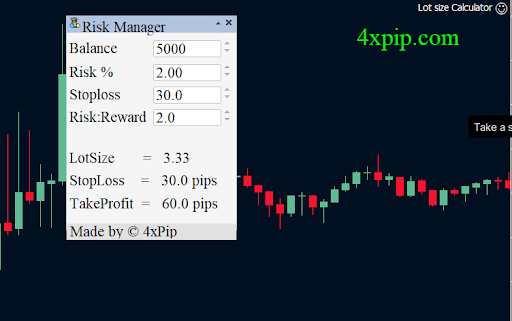Did you know that even the most seasoned traders sometimes feel like they're playing whack-a-mole with their stop-loss orders in volatile markets? Managing stop-loss risk in highly volatile stocks is crucial for safeguarding your investments. This article dives deep into the nuances of stop-loss risk, detailing effective strategies for setting and adjusting stop-loss orders in unpredictable market conditions. Discover how to navigate the challenges of volatility, avoid common pitfalls, and leverage tools to monitor your positions in real-time. Additionally, we explore the impact of news events and market swings on stop-loss decisions, and how diversification can be a powerful ally. Join us at DayTradingBusiness to equip yourself with the knowledge needed to master stop-loss management in high-volatility environments.
What is stop-loss risk in volatile stocks?
Stop-loss risk in volatile stocks is the chance that rapid price swings trigger your stop-loss order unexpectedly, causing you to sell at a loss during temporary dips. In volatile markets, prices can jump or plummet quickly, hitting your stop-loss point and then reversing, which can lead to unnecessary exits and missed gains. Setting tight stop-losses in such stocks increases the chance of being stopped out by normal fluctuations, while wider stop-losses risk larger losses. Managing this risk involves choosing appropriate stop-loss levels that account for the stock’s volatility, using wider margins, or employing mental stops instead of automatic orders to avoid false triggers.
How do you set an effective stop-loss in volatile markets?
Set a wider stop-loss margin based on recent volatility, like using the Average True Range (ATR) to determine a safe buffer. Avoid tight stops that get triggered by normal price swings; instead, give your trade room to breathe. Consider placing stops below key support levels or recent lows to protect against false breakouts. Use a trailing stop that adjusts with price movements to lock in gains without being knocked out prematurely. Always analyze the stock’s volatility before setting the stop to avoid unnecessary exits during normal fluctuations.
What are the best stop-loss strategies for high-volatility stocks?
Use tight stop-losses just below recent support levels to limit downside risk. Implement mental stop-losses rather than fixed percentages to adapt to market swings. Consider using trailing stops to lock in gains as the stock moves favorably. Avoid setting stop-losses too close, which can trigger premature exits during normal volatility. Use wider stops if the stock is highly volatile, but monitor closely. Combine stop-loss orders with position sizing to prevent large losses from sudden moves. Regularly reassess support and resistance levels to adjust stops accordingly.
How does volatility impact stop-loss placement?
Volatility widens the gap between entry price and stop-loss, requiring larger buffers to avoid premature exits. In highly volatile stocks, traders set wider stop-losses to prevent being stopped out by normal price swings. Rapid price swings can hit tight stops quickly, causing unnecessary losses, so traders adjust stop-loss levels based on average true range or recent volatility. Increased volatility means more frequent stop-loss triggers, which can lead to higher trading costs and emotional stress. Therefore, managing stop-loss risk in volatile stocks involves setting wider stops and monitoring market conditions closely.
When should you tighten or loosen your stop-loss?
Tighten your stop-loss when the stock shows signs of a strong uptrend but risks sudden reversals, locking in profits. Loosen your stop-loss if volatility spikes, to avoid being stopped out by normal price swings. In highly volatile stocks, tighten stops during rapid gains to protect profits, and loosen them during sharp dips to prevent premature exits. Adjust your stop-loss based on recent price movements and market conditions, not fixed rules.
What are common mistakes in stop-loss management during volatility?
Common mistakes in managing stop-loss during volatility include setting stops too tight, causing premature exits from normal price swings; using fixed dollar amounts that don’t adapt to market swings; ignoring wider bid-ask spreads that can trigger stop-losses unexpectedly; failing to adjust stops as volatility increases, leading to unnecessary losses; and relying solely on technical levels without considering market context, which can result in getting stopped out during normal fluctuations.
How can trailing stops help manage risk in volatile stocks?
Trailing stops lock in gains and automatically sell if the stock drops a set percentage from its highest point, preventing large losses during sudden swings. They adapt to upward movements, giving the stock room to grow while protecting against sharp declines. In volatile stocks, trailing stops help you stay in profitable trades until a significant reversal, reducing emotional decisions and minimizing risk.
What role does position size play in stop-loss risk?

Position size determines how much you stand to lose if a stop-loss triggers. Smaller positions limit potential losses in volatile stocks, protecting your capital. Larger positions increase risk, risking bigger losses if the stock moves against you. Proper position sizing helps manage overall risk and prevents large drawdowns during high volatility.
How do market swings affect stop-loss orders?
Market swings can trigger stop-loss orders unexpectedly in volatile stocks, causing premature sell-offs. Rapid price swings might hit your stop-loss level, even if the overall trend isn't negative, leading to losses you didn't intend. Big swings increase the chance of false triggers, making it harder to hold through normal volatility. Setting wider stop-losses can help avoid getting stopped out by normal market noise during swings.
What tools can help monitor stop-loss levels in real time?
Tools like TradingView, Thinkorswim, and MetaTrader 4/5 offer real-time stop-loss monitoring. They send alerts or automatically execute orders when price hits your stop-loss level. Some broker platforms include built-in real-time stop-loss alerts, while third-party apps like StockTwits or alerts from trading bots also track these levels live. Using these tools helps you react instantly in volatile stocks.
Learn about What tools can help monitor stop-loss risk?
How to avoid getting stopped out prematurely in volatile stocks?
Set wider stop-loss levels to handle price swings, avoiding tight stops that trigger early. Use mental stops instead of automatic ones, giving your trade room to breathe. Consider trailing stops that adapt as the stock moves in your favor, locking in gains without premature exit. Focus on technical support levels or moving averages as natural stop points, rather than fixed percentages. Keep position sizes smaller to reduce the impact of volatility. Lastly, monitor market conditions and news to avoid stops triggered by temporary spikes or drops.
What are the differences between fixed and mental stop-losses?
Fixed stop-losses set a specific price or percentage at which you sell to limit losses, remaining constant regardless of market moves. Mental stop-losses are an internal threshold you decide beforehand but don’t place an actual order; you watch the stock and sell manually if it hits your mental limit. Fixed stop-losses execute automatically, reducing emotional bias, while mental stop-losses rely on discipline and quick judgment in volatile markets. In highly volatile stocks, fixed stops can be triggered by sudden swings, causing premature exits, whereas mental stops require vigilance to avoid emotional reactions and missed opportunities.
How does news impact stop-loss decisions in volatile stocks?
News can trigger sudden price swings, prompting traders to set tighter or looser stop-losses. Negative headlines or earnings misses may lead to quick stops to limit losses, while positive news can cause stops to be raised in anticipation of continued gains. Volatile stocks react sharply to news, making stop-loss placement more critical to avoid getting stopped out prematurely or suffering larger losses. Rapid news flow creates uncertainty, so traders adjust stop-loss levels based on news impact to protect profits or limit downside.
Learn about How News Events Impact Day Trading Decisions
When is it better to use stop-limit instead of stop-loss orders?
Use stop-limit orders instead of stop-loss orders in highly volatile stocks when you want to control the exact price you sell at, avoiding sudden drops below your limit. They’re better if you prefer to prevent selling at a much worse price during rapid swings, but watch out—they might not execute if the stock gaps past your limit. Use stop-limit when you want precise exit points and are okay with the risk of no fill in volatile markets.
How can diversification reduce stop-loss risk in volatile markets?
Diversification spreads risk across different stocks or sectors, so when one stock hits a stop-loss due to volatility, others may remain stable or rise. It prevents your entire portfolio from being affected by a single volatile stock’s downturn. By holding varied assets, sharp swings in one stock won’t wipe out your gains or trigger excessive losses. This buffer helps manage stop-loss risk, making your overall portfolio less vulnerable during market swings.
Learn about How to minimize stop-loss risk during volatile markets
Conclusion about Managing stop-loss risk in highly volatile stocks

In summary, effectively managing stop-loss risk in volatile stocks is crucial for minimizing losses and maximizing potential gains. By understanding the nuances of stop-loss placement, employing strategies like trailing stops, and considering factors such as position size and market swings, traders can navigate the challenges of volatility. Additionally, leveraging tools and maintaining awareness of news impacts can enhance decision-making. For comprehensive guidance on these strategies and more, DayTradingBusiness provides valuable insights to help you thrive in the dynamic world of trading.